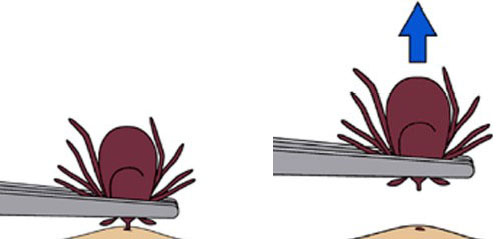A single bite of this particular carnivorous tick is enough to develop a severe allergy to red meat, which can often last a lifetime
Don't store avocado like this: it's dangerousWith the arrival of heat, ticks return, insects that are potentially dangerous for our health as they are carriers of potentially lethal diseases and allergies. We already told you about it in this articleA single tick bite is enough to cause the victim to have a severe meat allergy that can last for years - if not a lifetime.
It is alpha-gal syndrome, which is a food allergy to red meat. This disease begins, in fact, following the bite of a particular species of carnivorous tick (Ambliomma americanum) which transmits a sugar to humans (alpha galactose, abbreviated to alpha-gal). The organism of the individual bitten by the tick thus begins to produce antibodies against this sugar, identified as an allergen and also present in red meat.
Therefore, whenever the person eats meat, dairy products or food jelly of animal origin, a severe allergic reaction is triggered - with symptoms ranging from hives to swelling, from headache to anaphylactic shock.
The allergic reaction is triggered a few hours after taking food, and this makes it difficult to understand what was the cause of the malaise. Unfortunately, there is no cure for alpha-gal syndrome and the patient is condemned to pay close attention to what he eats until the levels of antibodies in the body drop to the point of allowing meat to be eaten without risk.
What to do in case of a sting
If we realize that we have a tick on us, we must immediately detach it from our skin, to avoid or minimize the risk of infection. To do this correctly, we just need to have fine pointed tweezers, such as those used to pull the hair:
- We grab the tick as close as possible to the surface of the skin with the help of tweezers;
- We pull up, exerting constant and even pressure. Be careful not to rotate the tweezers or shake the tick: these movements could cause the insect's mouthparts to break and stay in the skin.
- After removing the tick, we thoroughly clean the bite area with rubbing alcohol or soap and water.
If you experience strange symptoms, such as fever or a rash (even a few weeks after the tick has been removed), it is best to consult your doctor about the tick bite and when it happened.

Here's how to properly remove a tick attached to the skin (© CDC.gov)
HERE you can download a CDC brochure with tips on how to best deal with a tick bite.
Follow your Telegram | Instagram | Facebook | TikTok | Youtube
Source: CDC
We also recommend:
- What to do if you find a tick on a child (and all areas of the body to check)
- Beware of ticks! They are very adept at hiding. Always check also in the mouth of your four-legged friends
- How to remove ticks correctly: which methods are suitable and which to avoid


























